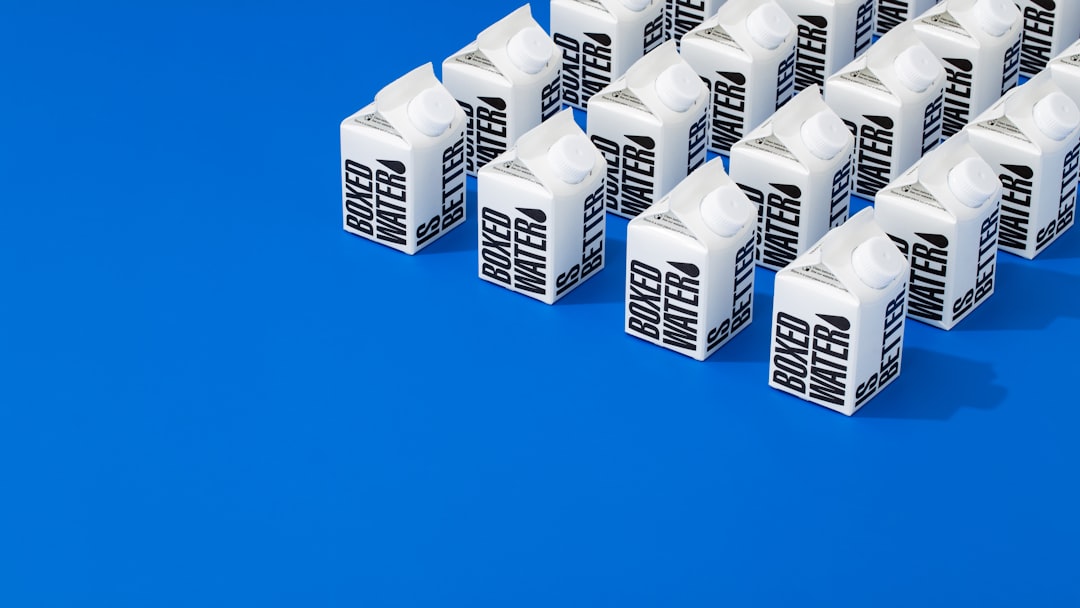

Engage prospects with a scan and streamline customer engagement with FREE QR code marketing tools by Sona – no strings attached!
Create a Free QR CodeFree consultation

No commitment

Engage prospects with a scan and streamline customer engagement with FREE QR code marketing tools by Sona – no strings attached!
Create a Free QR CodeFree consultation

No commitment
The manufactured home supply industry is evolving as digital technology transforms how suppliers, installers, and property owners connect and conduct business. Traditional engagement methods such as printed catalogs and word-of-mouth referrals often leave companies disconnected from decision-makers, while manual service orders make tracking and reporting inefficient. Companies miss out on high-value prospects because their interactions are not tracked, turning potential business into missed opportunities. QR codes in marketing are bridging this gap by merging offline and online customer experiences, making it possible to engage and identify leads who would otherwise remain anonymous.
Now, with a single scan, buyers, repair technicians, or property managers can access mobile home parts catalogs, submit repair requests, join loyalty programs, or review installation instructions. No special app is needed. Technology not only speeds up workflows; it reveals previously invisible customer journeys. QR solutions highlight which prospects are engaged, deliver precise attribution, and help supply companies avoid wasting marketing budgets on cold audiences.
With a strategic approach to QR code systems, manufactured home supply companies gain a modern way to deepen engagement, capture valuable first-party data, and drive repeat business. This guide explores how QR codes can replace outdated processes, improve targeting and segmentation, and deliver actionable insights necessary for growth in the manufactured home supply sector.

Manufactured home supply companies routinely encounter friction in customer engagement, where potential buyers, service technicians, or property managers pause or abandon actions due to outdated or disjointed processes. When interactions are slow or scattered across paper-based systems, valuable leads are lost, and companies lack the visibility to prioritize follow-up and personalize communication. Replacing analog workflows with scannable entry points makes every touchpoint responsive and measurable, thus reducing lost opportunities and elevating the customer experience.
The fastest gains come from converting high-friction analog moments into one-scan digital actions: service tickets that were previously emailed or handwritten, warranty cards that were mailed and never received, brochures that were read and discarded, and installation guides that were printed once and never updated. QR-enabled experiences deliver mobile-friendly forms, instant content access, and automated workflows that capture intent without adding complexity for the user.
Integrating QR solutions with your CRM and analytics stack turns scattered interactions into a continuous, trackable journey. Sales, service, and marketing teams can prioritize follow-up based on real behavior and personalize communications that match the scanner’s context. Platforms like Sona QR make it simple to deploy, manage, and measure codes at scale across your entire touchpoint map.

Manufactured home supply firms operate in a world where offline and online actions blend, yet the data trail often breaks at the point of physical contact. A buyer reads a flyer in a community office; a maintenance lead skims a packing slip; a contractor glances at a truck decal while on a job site. Without an instant digital onramp, intent fades and offline attribution disappears. QR codes reattach those moments to the digital journey so that every impression has a next step and every action is measurable. Learn more in QR in construction.
These benefits map directly to the realities of manufactured home supply: multiple buyer types with different needs, high SKU complexity, and service timelines that require speed. Whether you are marketing to park owners, retailers, contractors, or homeowners, a scannable experience reduces time to value and improves data capture simultaneously.
For example, a QR code on a delivery manifest can link to a punch list submission form that alerts a service manager instantly, while a code on truck signage can route to an after-hours booking page for emergency parts. Each scan initiates a measurable interaction that can be attributed to specific creative, placement, and audience.

There is no single QR solution for every scenario in manufactured home supply. Different stakeholders need different actions, and the right format keeps each flow simple. The following formats cover most high-impact use cases and can be mixed across your inventory, service, and marketing touchpoints.
Manufacturers and distributors benefit most from formats that lower friction in service intake and product research. Retail stores and field teams benefit from contact sharing and Wi-Fi access when they need quick collaboration on-site. Selecting the correct format by use case improves completion rates and downstream conversion.
Dynamic QR codes are ideal for the fast-paced supply chain. They enable destination updates as inventory or promotions change, while maintaining analytics that show which products and placements drive engagement. Static codes are still useful for evergreen assets like safety guides or fixed contact information.

Growth in this sector often comes from converting existing, often-invisible prospects into measurable business value. Significant demand hides within everyday touchpoints: a homeowner browsing hardware in-aisle, a maintenance supervisor unboxing shipments, a contractor scanning a decal on a service van. When these moments go unmonitored or lack a direct action path, they produce no leads, no insights, and no follow-up. QR codes unlock these interactions and turn them into trackable events that a sales or service team can act on.
Identify locations where your audience is most likely to engage and where the stakes are highest. Then place unique QR codes that match intent and context. Adding clear CTAs and value propositions, such as Scan to check if this part fits your unit or Scan to schedule delivery today, can lift scans and conversions significantly.
Targeted QR deployments at high-friction or anonymous points deliver more value from every interaction. Over time, the data reveals where to double down, which messages resonate by audience, and how to improve the physical layout of your store or field operations.

QR codes shine when they eliminate friction and capture intent. Below are representative use cases mapped to the most common interactions across the manufactured home supply lifecycle. Each one includes a short description and the primary business outcome it supports.
Embedding these use cases at key offline touchpoints transforms every interaction into a measurable opportunity. When paired with dynamic codes and analytics, you can monitor performance, test variations, and scale the winners.
Optional enhancements include using QR codes for training certification lookups, safety checklists at job sites, and event RSVPs for dealer or installer training days. Each adds value to a specific audience while growing your first-party data set.
Each QR scan is a signal that carries context: where the person was, what they were looking at, and what they wanted to do. Manufactured home supply companies can design multiple codes across journey stages to turn those signals into actionable audience segments. This allows you to retarget based on real behavior rather than assumptions and to prioritize the leads most likely to convert.
Start by differentiating codes for awareness, consideration, and conversion. Then add metadata such as location, asset type, and product line. Sync the resulting segments to your CRM and ad platforms to automate follow-up. Over time, you will learn which combinations produce the best leads and the fastest sales cycles. For tactics, see Sona’s retargeting playbook.
In this sector, useful distinctions include installers versus retailers, park owners versus homeowners, and emergency repair scans versus planned upgrade scans. Treat each audience differently: time-sensitive service flows for emergencies, education-rich sequences for planned upgrades, and account-based outreach for park owners and retailers.
QR codes are more than convenient links. They are connective tissue across print, in-store, out-of-home, events, and digital campaigns. When used consistently and tied to a central analytics platform, they convert awareness into measurable action and reveal exactly which channels influence sales. For manufactured home suppliers, that means aligning merchandising, field operations, and marketing around shared data.
Begin by mapping your core channels and the next best action for each. Then apply QR codes with clear CTAs that move buyers toward that action. The result is a connected offline-to-online funnel where scan data enriches profiles, informs creative, and guides resource allocation.
QR codes serve as the offline onramp to your digital marketing engine. They also unlock a new layer of measurement in channels that used to be difficult to quantify. With a centralized platform like Sona QR, you can manage codes, monitor performance by asset and location, and sync scan data with your CRM and ad platforms for closed-loop reporting.
Building a high-performing QR program requires a clear plan that ties each scan to a business outcome. The following checklist helps you select the right use cases, design codes that get scanned, and capture the data you need to measure impact and optimize over time.
Before you begin, align stakeholders across merchandising, operations, and sales. Decide who will own code creation, landing pages, and analytics. Set target metrics such as scan-to-form-completion rate, average time to service booking, and revenue attributed to QR campaigns.
With this discipline, every scan becomes a meaningful engagement moment. Over time, your team will learn which combinations of placement, copy, and offer move the needle, and you will be able to forecast revenue from QR-driven channels with increasing accuracy.
Manufactured home suppliers often struggle to connect engagement activity to financial outcomes. Counting scans is a start, but it does not prove business impact or guide optimization. A robust analytics approach links every scan to lead qualification, sales movement, service outcomes, or customer retention. That requires unified tracking, consistent tagging, and system integrations that synchronize scan data with your CRM and ad platforms.
Begin by establishing a taxonomy for code naming, UTM parameters, and metadata such as location, asset, product line, and journey stage. Then build dashboards that align to team goals: marketing conversion rates and CAC, sales cycle time and pipeline sourced by QR, service response time and backlog reduction. When teams see their metrics improve as scans increase, adoption accelerates.
The result is a QR program that operates like a performance channel. Sona QR captures real-world engagement, and Sona.com turns that engagement into insights you can act on. With closed-loop attribution, QR codes move from tactical experiments to essential drivers of growth and efficiency.
Scaling QR across your business requires consistent design, thoughtful placement, and automation. Success grows when staff understand the why behind the program and when scanners receive immediate value. The following best practices help you increase scan rates, capture richer data, and improve ROI.
Consider piloting in a single department or location before rolling out company-wide. Use that pilot to refine messaging, test incentives, and validate analytics. Share results with teams so they can see how small changes in copy or placement produce measurable improvements.
Creative deployments specific to this industry include QR stickers on warranty panels that link to maintenance checklists, codes on permit packets that route inspectors to digital documentation, and QR labels on inventory bins that log reorders to a central dashboard. Each reduces friction while building a measurable, repeatable process.
For manufactured home supply companies, QR codes are more than a trend, they are essential tools for closing data gaps, reducing inefficiency, and building relationships with decision-makers. Every QR-enabled interaction is a chance to identify, segment, and nurture valuable prospects who might otherwise go unnoticed. By making the customer’s next step one scan away, you increase engagement and turn interest into action.
Modern QR solutions bridge offline and online engagement, deliver actionable analytics, and create a seamless journey from initial research to purchase and retention. When integrated with your CRM and analytics, QR programs reveal exactly which placements, messages, and offers drive revenue. That clarity lets you focus resources on what works and continuously refine the customer experience.
The path forward is practical: audit analog touchpoints, replace them with scannable flows, measure outcomes, and iterate. With a centralized platform like Sona QR, you can generate and manage codes, attribute scans to pipeline, and connect your teams around shared insights. Start creating QR codes for free.
QR codes have transformed manufactured home supply companies from traditional sales channels into dynamic, data-driven growth engines. Whether it’s streamlining inventory access, enhancing supplier communication, or providing instant product details to customers, QR codes replace cumbersome manual processes with seamless, mobile-friendly interactions that capture real-time engagement and drive operational efficiency. Imagine instantly knowing which products attract the most interest on-site or which supplier materials lead directly to faster orders and satisfied buyers.
With Sona QR, you can create dynamic, trackable QR codes in seconds, update information instantly without costly reprints, and connect every scan directly to actionable insights that boost both customer acquisition and supply chain responsiveness. No more missed opportunities—just smarter workflows and measurable results.
Start for free with Sona QR today and transform every scan into a faster sale, a stronger supplier relationship, or a better customer experience.
The article does not list specific top-rated companies but highlights that companies using modern QR code solutions like Sona QR can improve engagement and grow their business.
You can access mobile home parts catalogs and compatibility tools via QR codes placed on shelf tags, packaging, or community flyers, providing instant product lookup for your specific model.
Choose a company that integrates modern digital tools like QR codes for streamlined ordering, real-time inventory updates, and efficient service requests to ensure reliable support and parts availability.
The article mentions platforms like Sona QR that integrate QR code management with CRM and analytics but does not specify particular online marketplaces for purchasing supplies.
Use QR codes found on packaging or service vehicles to access installation guides, troubleshooting videos, and submit repair requests quickly through digital forms linked to your supply company.
Use Sona QR's trackable codes to improve customer acquisition and engagement today.
Create Your FREE Trackable QR Code in SecondsJoin results-focused teams combining Sona Platform automation with advanced Google Ads strategies to scale lead generation

Connect your existing CRM

Free Account Enrichment

No setup fees
No commitment required

Free consultation

Get a custom Google Ads roadmap for your business






Launch campaigns that generate qualified leads in 30 days or less.
